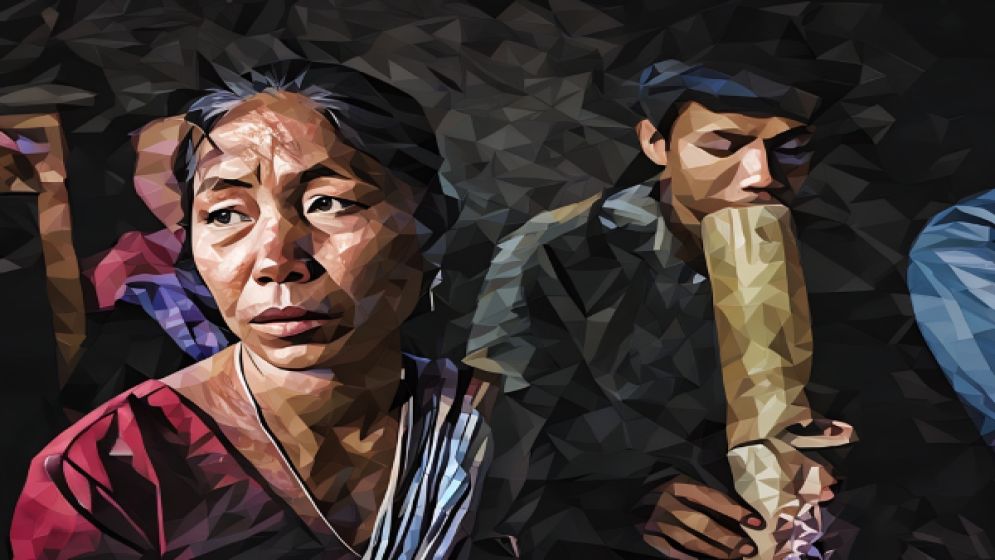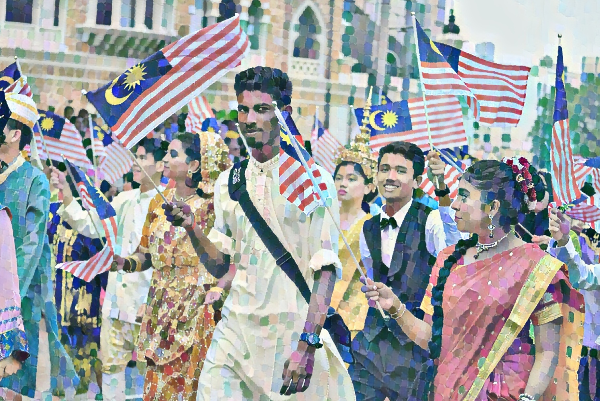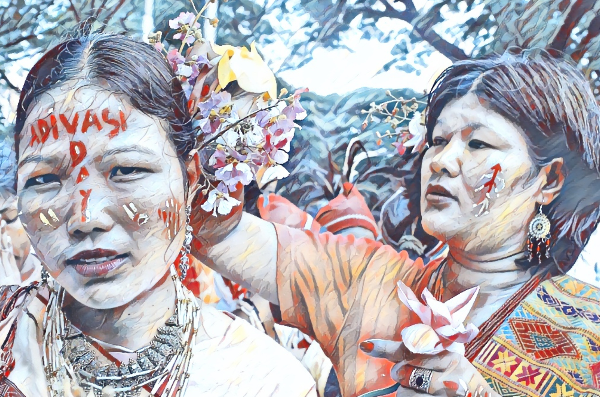The politics of indigeneity: Ignoring Bangladesh's Muslim majority “Bengali indigeneity” is a red flag

My undergraduate studies in Southeast Asia, focusing on International Relations and Global Affairs in Thailand, offered both benefits and drawbacks.
While the degree name implied a broader scope, the open credit system allowed me to concentrate on Political Philosophy and Sociology/Anthropology.
The distinction between Sociology and Anthropology is largely historical. Europeans initially used Sociology to study their own "civilized" societies and Anthropology to study others that they deemed "uncivilized."
Today, this distinction however holds only a little significance.
At Mahidol University, the Sociology/Anthropology instructors were Christian Oesterheld, Hardina Ohlendorf, and Marja-Leena Heikklia-Horn. I took multiple classes with both Chirstian and Hardian, but none with Marja-Leena.
Christian, a German national, completed his Master's at SOAS and is currently pursuing a PhD in Germany. He conducts fieldwork in Kalimantan, Indonesia, where he's deeply integrated with a Dayak foster family.
The Dayak, a non-Muslim group, were involved in ethnic riots, and Christian's research includes exploring the perspectives of the perpetrators of the conflict.
In Southeast Asia, especially in Malaysia, the term "indigenous" is contentious among European and other scholars who view Islam as problematic.
This is because the term "bhumiputera" (indigenous) in Malaysia refers to the Malays, who, as per the official definition, are Muslims as well. Recognizing Malays as indigenous complicates the narrative for those critical of Islam.
The situation in Malaysia is the exact opposite of what we see in Bangladesh. In Bangladesh, "Bengali" is often used as a substitute for Hindu and Bengali-ness refers mostly to rituals and cultures inherent in Hinduism.
Conversely, in Malaysia, "Malay" is synonymous with Muslim. Malaysia actively promotes Islamic culture under the label of Malay culture, leaving little space for opposition since it is presented as the culture of the indigenous people (bhumiputera).
So, scholars studying Southeast Asia, especially Malaysia, stress that Malay identity is a social construct, not a historical truth. They argue the connection between Malay and Muslim identities is arbitrary.
Moreover, they contend that the concept of indigenous/bhumiputra basically doesn't exist in Asia; it's a political narrative used to claim privilege.

Indigenous
issue and the underlying political narrative
Malaysia's Bhumiputera First policy exemplifies this. Many universities exclusively admit bhumiputeras, and even among them, there are further distinctions. Malaysia clearly shows how much can be grabbed under the guise of indigenous/bhumiputera status.
In class, Christian primarily presented the bhumiputera/indigenous identity issue from the perspective of how the convergence of Islamism and indigenous politics has negatively impacted Malaysia.
Initially, Christian perhaps did not fully recognize this, but through our discussions and my assignments, I demonstrated that his taught theories and referenced materials can be marshaled against Hindutva in South Asia in general and all forms of politics of indigeneity in Bangladesh.
Christian introduced me to several writings, including two noteworthy articles. The first is André Bateille's "The Idea of Indigenous People," published in 1998 in Current Anthropology, a leading anthropology journal.
This article has been cited over 500 times, indicating its significant influence in the social sciences and humanities, though impact is hardly indicative of the veracity of the claims made in a given piece.
André Bateille asserts that the term "indigenous" is truly applicable only in America, Africa, and Australia, where a clear distinction can be made between indigenous peoples and white settlers.
In contrast, Asia lacks a comparable indigenous population due to its history of intergroup conflicts. No one is truly indigenous or an outsider.
Bateille further argues that the term "indigenous" has primarily become an ideological or political tool, particularly in the context of South Asia where he has extensive teaching experience in India.
The second article, "Should We Have a Universal Concept of 'Indigenous Peoples' Rights'?: Ethnicity and Essentialism in the Twenty-First Century" by John Bowen, published in 2000, is less widely discussed but delves deeper.
Bowen questions what rights indigenous peoples can claim if such a category does not even exist in the first place, and this question preoccupies his analysis.
Bowen concurs that the concept of indigenous people, as understood in the context of European settler colonialism, does not apply to Asia.
He highlights how the labels of indigenous/outsider have been exploited for political suppression and outright violence, citing examples like the Nazis, Malaysian Muslims using the bhumiputera label, Hindu nationalists targeting Muslims in India, and the Hutu genocide against Tutsis in Rwanda.
Ultimately, Bowen proposes that the term "indigenous" is mainly a tool for political struggle and can be used selectively in academic discussions. However, he remains skeptical about the notion of universal indigenous rights.

Why is finding
indigenous people hard in Asia?
These theoretical discussions in sociology/anthropology highlight two key points: firstly, Asia's history of multiple conquests by various ethnicities makes the categories of 'indigenous' and 'outsider' inapplicable. Secondly, the term 'indigenous' has become a political slogan.
Now, let's examine the reality in Bangladesh. Those claiming indigenous status can be divided into plains people (like the Santhal) and hill people (like the Chakma). Bateille's discussion clarifies the situation of plains people. Let us focus on the hill people.
Hill ethnic minorities like the Chakma, Marma, and Tripura cannot claim eternal residence in their current locations; they were not even the first settlers. They lack both long-standing presence – in a way that can separate them from the competing non-tribal populations – and original occupancy.
Multiple accounts, including confessions, reveal this truth. T.H. Lewin's book "The Hill Tracts of Chittagong and the Dwellers Therein," dating back to the British era, serves as a reference.
Even if we assume Lewin is biased (who, by the way, is not?)R.H Sneyd Hutchinson's "An Account of Chittagong Hill Tracts" also provides detailed descriptions of Chakma mythology that details how they came to settle in Chittagong.
In short, the Mongoloid communities residing in the hills started migrating from India, Myanmar, and Cambodia after the 16th century.
Additionally, there is hardly any evidence that suggests that they found the land empty upon arrival. Bengali and non-tribal populations, though smaller in number, were also present in the hills, with many not permanently settled. Bengalis were also heavily involved in agriculture and trade and commerce involving the tribal groups.
Starting from the 1860s, the British colonial administration restricted the movement of non-Mongoloid tribes in the hills. The restriction was relaxed in 1930 before being fully scrapped in 1964.
Currently, tribal people desire a return to this British colonial system, while Bengalis oppose it.
These pieces of information can be found in Mizanur Rahman Shelly's book, "The Chittagong Hill Tract of Bangladesh: The Untold Story." While claims of unbiasedness in social sciences are often met with skepticism, the accuracy of the information and the persuasiveness of the narrative are the key.
Mongoloid groups now also acknowledge that they are not indigenous in the sense that the commonsensical – not technical – definition of the term suggests. For example, recently, Ilira Dewan, the general secretary of the Hill Women's Federation, told the BBC that they consider themselves indigenous due to their distinct language, culture, and customs compared to the majority Bengalis.
So, they admit they are not indigenous – at least in the sense that they are native to the land in contrast to others castigated as outsiders/settlers – but rather an ethnic minority. If so, why not use the term "ethnic minority" instead of the confusing and misleading "indigenous"?
Ethnic minorities have protections; there is a global discourse on minority rights. Why insist on protection specifically as "indigenous" people?
If being indigenous simply means having a distinct language and culture, then Biharis or even Rohingya refugees could also claim that status.
This confusion is deliberately maintained for political purposes. And let us not forget, oppressors in Palestine and Kashmir also label themselves as indigenous, not settlers.
Against the backdrop of surge in Hindutva in South Asia and the global Islamophobic climate, denying the Bengali, a (predominantly) Muslim population, indigeneity also has far-reaching consequences.
Kashmiri scholar Hafsa Kanjwal asserts, “one of the main ways Islamophobia has operated throughout history is through a denial of Muslim indigeneity or [a] sense of Muslim belonging to a place.”
—
Md Ashraf Aziz Ishrak Fahim has a first degree in International Relations and Global Affairs from Mahidol University, Thailand, and an MA in Social and Political Thought from the University of Leeds, UK. He is currently a graduate student of Contemporary Islamic Studies at Hamad Bin Khalifa University in Qatar. He can be reached at mdfa48907@hbku.edu.qa

